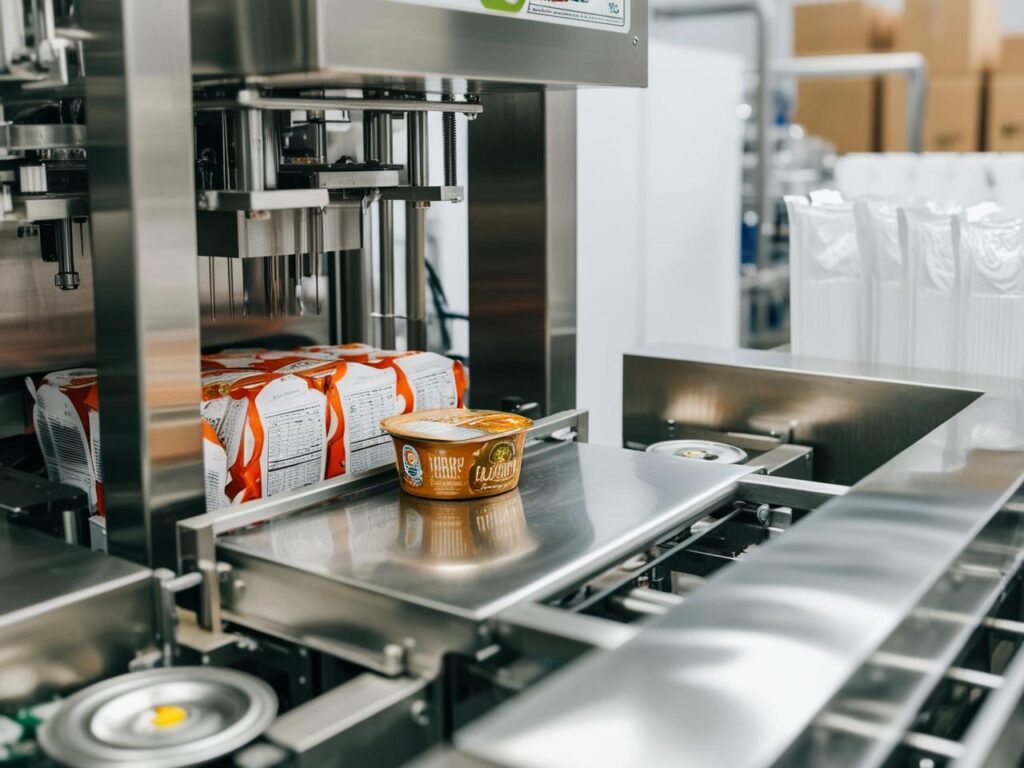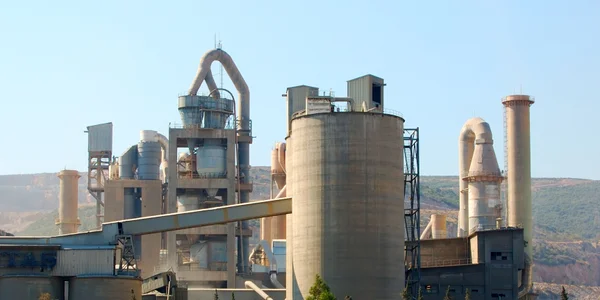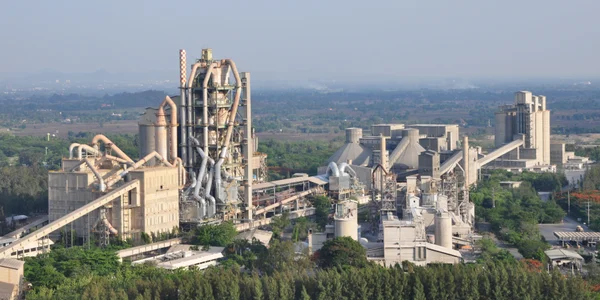Toimistot
PÄÄKONTO

Saksa
- Intensiv Filter Himenviro Technologies GmbH
Neustraße 45-49, 42553, Velbert, Deutschland/Saksa - +49 20534200990
ALUETOIMISTO

Iso-Britannia
- Intensiv Filter Himenviro UK Limited
47, Bath Street WS13BX, Wallsall West Midlands, Iso-Britannia - +44 1922 628893
ALUETOIMISTO

Yhdistyneet arabiemiirikunnat
- Intensiivinen suodatin Himenviro Technologies FZE – LLC
Business Centre, Sharjah Publishing City Free Zone, Sharjah, Arabiemiirikunnat - +971-556074697
ALUETOIMISTO

Intia
- Intensiv-Filter Himenviro Private Limited
D-247/11, Sector-63, Noida - 201301, Uttar Pradesh, Intia - +91-120-4642-500
ALUETOIMISTO

Intia
- Intensiv-Filter Himenviro Private Limited
D-247/11, Sector-63, Noida - 201301, Uttar Pradesh, Intia - +91-120-4642-500
ALUETOIMISTO

Intia
- Intensiv-Filter Himenviro Private Limited
D-247/11, Sector-63, Noida - 201301, Uttar Pradesh, Intia - +91-120-4642-500
Elintarviketeollisuuden ilman- ja pölynsuodatusratkaisut
Elintarvike- ja juomateollisuus on monimutkainen ja tarkasti säännelty ala, joka on riippuvainen tarkoista prosesseista ja tiukoista hygieniastandardeista. Yksi kriittinen osa näiden standardien ylläpitämistä on tehokas pölyntorjunta. Prosesseissa, kuten viljan käsittelyssä, sekoittamisessa, yhdistämisessä ja pakkaamisessa, syntyy hienojakoisia pölyhiukkasia, jotka voivat saastuttaa tuotteita, aiheuttaa terveysriskejä työntekijöille ja aiheuttaa räjähdysvaaroja.
Näiden haasteiden ratkaisemiseksi tarjoamme edistyneitä suodatusratkaisut erityisesti elintarvike- ja juomateollisuudelle suunniteltu. Järjestelmämme on suunniteltu keräämään ja poistamaan pölyhiukkasia varmistaen tuotteen puhtauden, työntekijöiden turvallisuuden ja määräystenmukaisuuden.
Pölynsuodatusprosessi elintarviketeollisuudessa
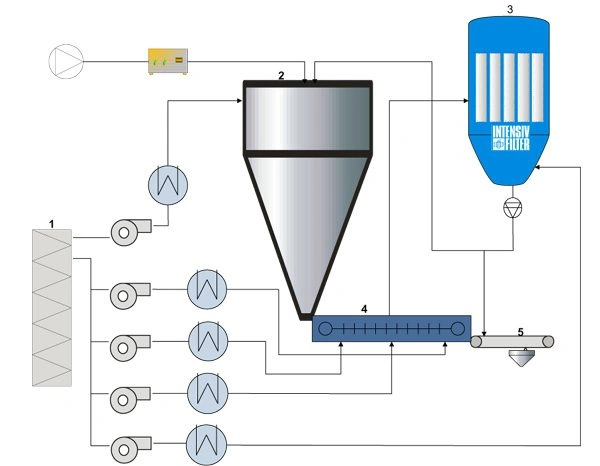
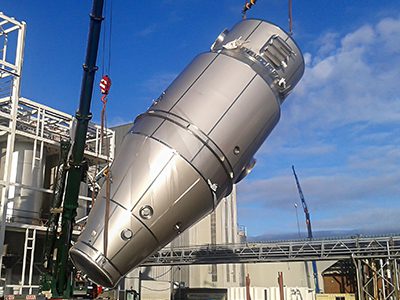
- 1. Ulkosuodatin
- 2. Ruiskukuivain
- 3. CIP-suodatin
- 4. Ulkoinen leijukerros
- 5. Täyttö
CIP-suodattimen vaadittu spesifikaatio
Tyypillisiä suunnittelutietoja | CIP-suodatin |
|---|---|
Kaasun tilavuus | < 230 000 m³/h |
Kaasun lämpötila | 80–90 °C |
Pölyn tyyppi | Kuivatut maitotuotteet |
Jäännöspölypitoisuus | < 10 g/m³ |
Raakakaasun pölypitoisuus | 20 mg/m³ |
Puhdistus | On-line |
Suodatinväline | Polyesteri |
Räjähdyssuojattu muotoilu | Kyllä |
Sorbentti |
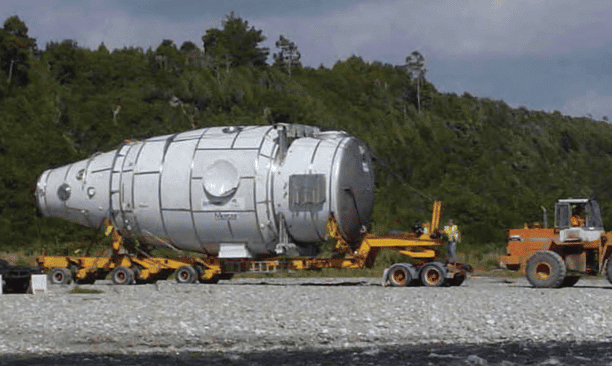
Tuotteidemme sovellukset elintarviketeollisuudelle

Kerää irtomateriaalien, kuten jyvien, jauheiden ja hiutaleiden, siirron aikana syntyvä pöly.
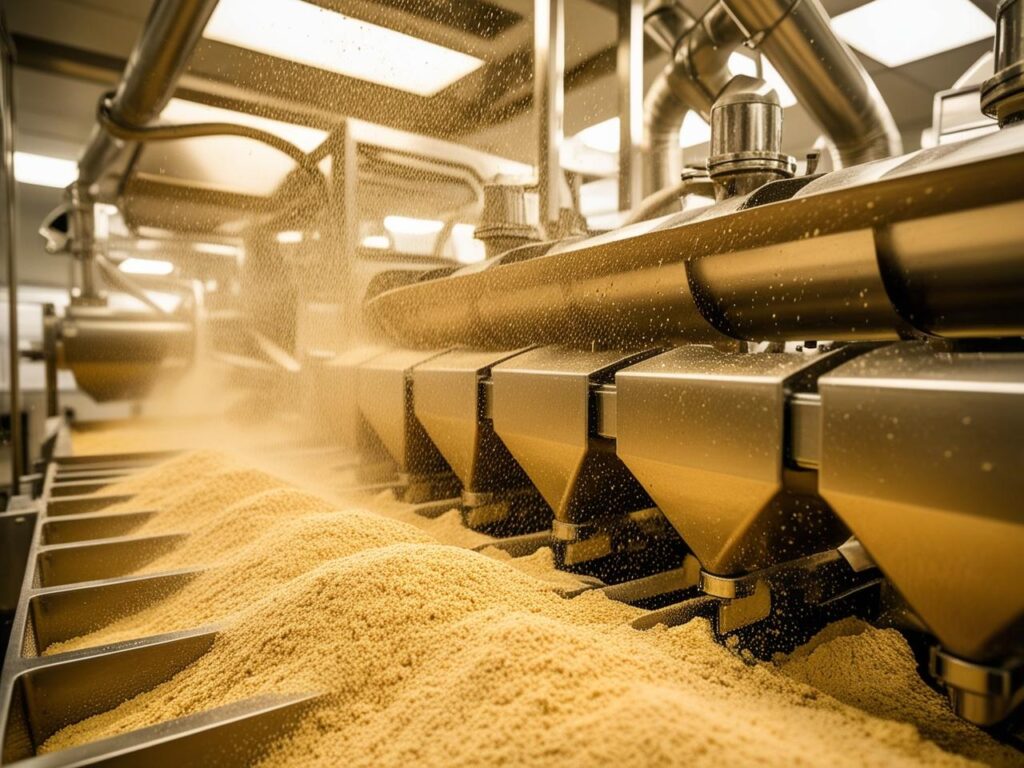
Hallitse pölypäästöjä korkeaenergisistä prosesseista, kuten jauhatuksesta, hionnasta ja jauhamisesta.
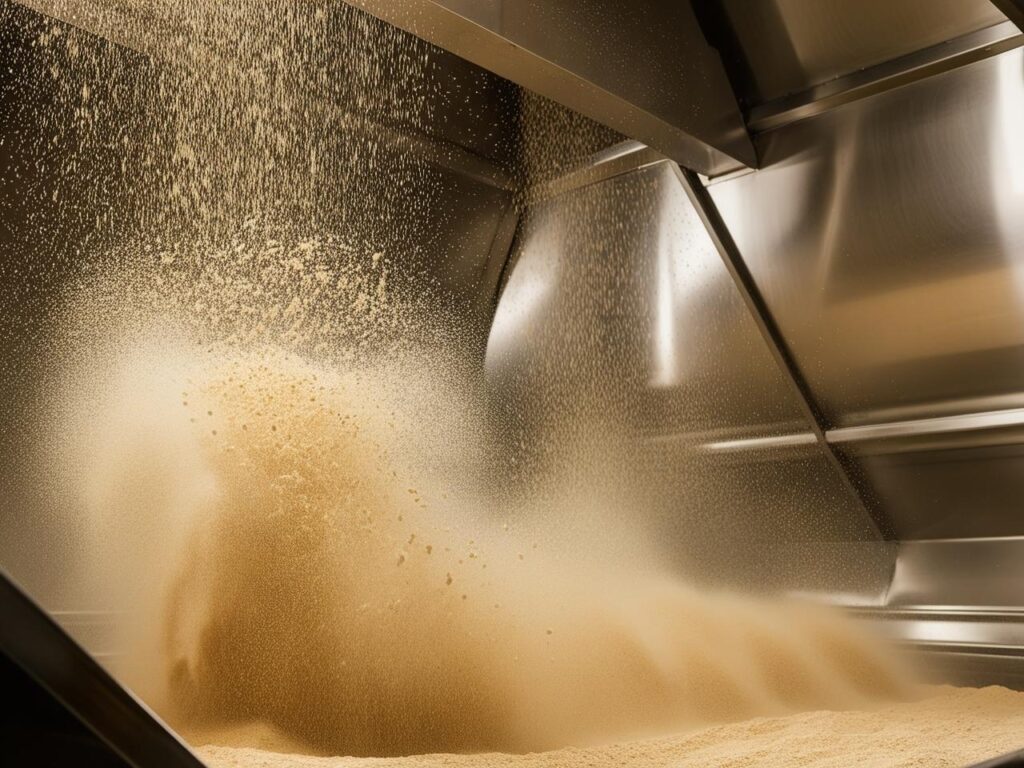
Pölyn torjunnan sääntelymaisema |
|---|
Elintarviketurvallisuusmääräykset |
FDA:n ja USDA:n standardien noudattaminen |
Työntekijöiden terveys ja turvallisuus |
OSHA-määräysten noudattaminen |
Palon ja räjähdyksen ehkäisy |
NFPA-standardien käyttöönotto |
Ympäristönsuojelu |
Tuotteen laatu ja yhdenmukaisuus |
Lyhemmät seisokkiajat ja ylläpitokustannukset |
Pölynhallinnan haasteet |
|---|
Tuotteen saastuminen |
Työntekijöiden terveysriskit |
Palo- ja räjähdysvaarat |
Säännösten noudattaminen |
Ristikontaminaatio |
Mikrobien kasvu |
Tiukan elintarviketurvallisuuden noudattaminen |
Heikkenevä tuotteen laatu |
Laitteiden vauriot |
Tehokkaan pölynhallinnan keskeiset näkökohdat |
|---|
Toteuta tehokas pölynkeräys |
Varmista asianmukainen ilmanvaihto ja paine |
Kuivatut maitotuotteet |
Käytä tehokkaita suodatusjärjestelmiä |
Säännöllinen huolto ja tarkastus |
Noudata alan standardeja |
Arvioi pölynhallintajärjestelmä säännöllisesti |
Prosessikohtaiset huomiot |
Riskienarviointi ja lieventäminen |
Ota yhteyttä asiantuntijakonsultaatioon
Tutustu muihin palveluihimme!
Usein kysytyt kysymykset
Elintarvikkeiden jalostuksessa yleisiä suodatusjärjestelmiä ovat kalvosuodattimet (kuten mikrosuodatus, ultrasuodatus, nanosuodatus ja käänteisosmoosi), syvyyssuodattimet, aktiivihiilisuodattimet ja ultravioletti (UV) -valojärjestelmät. Näitä tekniikoita käytetään fysikaalisten, kemiallisten ja biologisten epäpuhtauksien poistamiseen, mikä varmistaa tuotteen puhtauden ja turvallisuuden.
Suodatusjärjestelmät varmistavat elintarviketurvallisuusstandardien noudattamisen poistamalla tehokkaasti epäpuhtauksia, kuten mikro-organismeja, hiukkasia ja kemikaalijäämiä, raaka-aineista ja tuotteista. Tämä puhdistusprosessi auttaa täyttämään sääntelyvaatimukset ja ylläpitämään korkeita laatustandardeja lopputuotteissa.
Suodatusjärjestelmät ylläpitävät tuotteiden laatua ja tasalaatuisuutta poistamalla ei-toivotut hiukkaset, mikro-organismit ja muut epäpuhtaudet ainesosista ja lopputuotteista. Tämä varmistaa, että jokainen erä täyttää halutut puhtaus- ja laatustandardit, mikä johtaa kaikkien tuotteiden maun, ulkonäön ja turvallisuuden yhdenmukaisuuteen.
